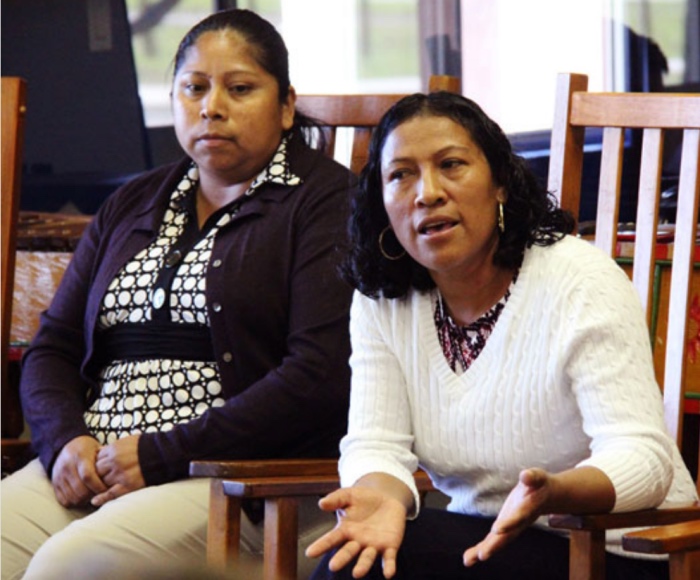News of the March 29 arson attack on the Highlander Research and Education Center in New Market, Tennessee, shocked and angered progressives across the country. Fortunately, no one was hurt, but the blaze destroyed Highlander’s main office building, along with valuable organizational records and historic documents that had not been archived at the University of Wisconsin and other repositories. Yet, for the many familiar with its storied history of movement-building, research, radical education, and cultural work, the devastation goes much deeper than property loss. It’s as if a sanctuary was violated.
And violated it was. Making crystal clear their terrorist intention, the attackers left their mark on the parking lot by spray-painting a symbol derived from the fascist Romanian Iron Guard during the 1930s that is commonly used by white supremacists. The same symbol was painted on one of the guns used in the recent murderous attack on two mosques in New Zealand, and scrawled alongside swastikas on the University of Tennessee Knoxville campus in November.
To find out more about the Highlander Center and how you can support the rebuilding effort, please visit their website: www.highlandercenter.org .
The attack on Highlander is the latest in a rising wave of racist terror targeting black, brown, and indigenous communities, immigrants, Muslims, Jews, and gender non-conforming folks. For Highlander’s co-executive directors, Ash-Lee Woodard Henderson and the Rev. Allyn Maxfield-Steele, the attack was disheartening, frustrating, and terrifying, but hardly surprising.
“Because of our history,” they wrote in a recent press release, “we are not surprised that this space, one where marginalized people working across sectors, geographies, and identities, show up consistently, has been repeatedly targeted over our 87 years of existence”…. read more
Farmworkers from Immokalee have long been counted among that number of marginalized groups that have sought out the Highlander Center for its support, its partnership, and its unparalleled historical knowledge of this country’s popular movements for economic and social justice.
A bit of CIW history: Way back when, in the early 1990s, when farmworkers in Immokalee first started organizing, we scoured the landscape here in the US for resources in the field of
Popular Education, the approach to community education and organization developed and practiced throughout Latin America but not widely known in this country. Many of the workers who co-founded the CIW were intimately familiar with the methodology of Popular Education; indeed, many of the CIW’s early leaders had been trained in the approach and employed it in organizing their communities back home before emigrating to the US. And so as we began to organize in Immokalee, we sought help in adapting the Latin American approach to Popular Education to the unique circumstances of the migrant farmworker community here in the US, a community divided by language, nationality, and race; a community facing unimaginable poverty and abuse; a community deeply atomized and always on the move; a community that is not, in fact, a community in the traditional sense, but more a labor reserve of immigrants deeply unfamiliar with their new surroundings and unfamiliar with each other.
And the Highlander Center was there for us. Highlander was there not only as the leading US resource on the question of Popular Education, but, for all intents and purposes, the only US resource on that question. And what we found out as we got to know Highlander and its remarkable staff is that, for a small, poor community in the rural south looking to organize for social and economic justice, there was simply no better place for finding the insight, the support, and the space you need to reflect and build your own vision of change than the Highlander Center and its ever-welcoming circle of rocking chairs overlooking the mountains outside New Market, Tennessee. In that space, a 25-year friendship was born.








